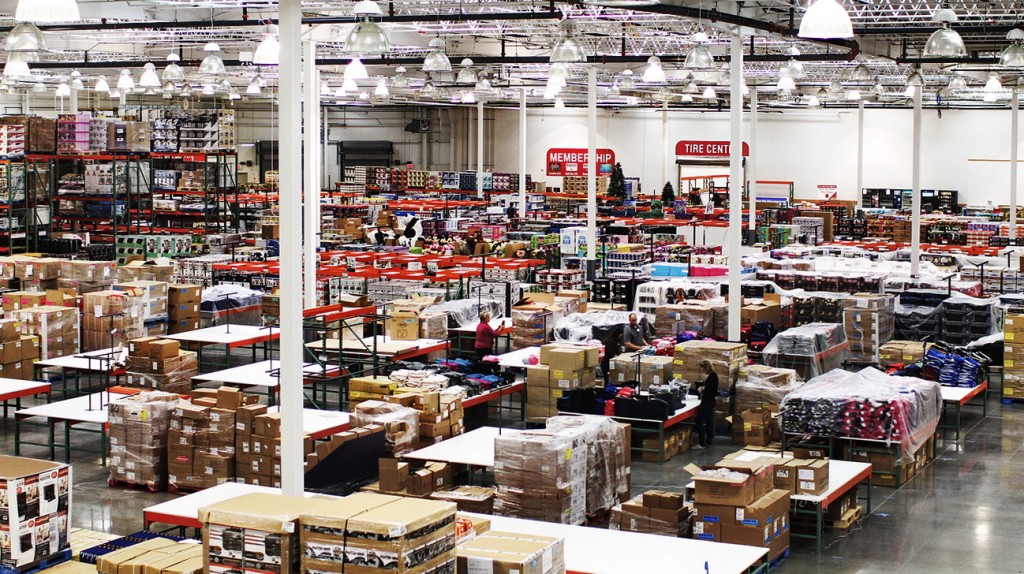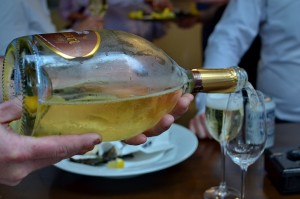The retail scene is distorted by Woolworths and Coles controlling three quarters of it, and the wine review scene is just as unbalanced. I was surprised when veteran wine writers Huon Hooke and Bob Campbell came out a few weeks ago with their #RealReviews Alliance, in protest of inflated scores from reviewers, kickbacks and Cash for Comment in the wine review business.

By comparison, there isn’t a lot we can criticize Woolworths for. Its Dan Murphy operation is well-run, despite the steady drain of staff who know about their wines. Woolworths knows its customers, I suspect, and most of them just want to buy cheap grog. I mean cheap, and they know what they like as well: $7 bottles of Kiwi savvy and $6 bottles of McGuigan Black Label Merlot.
Why we support the independents
The online model offers a space where smaller retailers can compete on price and on service. If there’s a problem, you can talk to the people running or owning the business. They also bring us interesting wines that you won’t see at Dan Murphy’s or Vintage Cellars. These are just a couple of the reasons we support the independents.
Frankly, I’m more worried about ALDI and Costco than Woolworths and Coles. ALDI is steadily opening more stores down under, and expanding its wine business. The Costco model has shown limited appeal down under but in the USA it sells more wine than any other retailer. That’s scary because they only stock just over 100 labels, and that’s the problem with both of these retailers: you end up relying on the wines they offer you.
You want wine with your toilet paper?
A couple of years ago, CNBC interviewed Costco’s chief wine buyer Annette Alvarez-Peters and was surprised that she saw no difference between wine and toilet paper. Do you really want our fine wine market controlled by global retailers who have less interest in wine than your dog?
It’s weird how people never learn: they shop at Walmart and then complain that there aren’t any other stores left in their town. They shop at Bunnings and deplore the disappearance of local hardware stores run by people who actually knew about hardware. I have intelligent friends who shop at Costco and ask me to include their wines in my lists. I’m not going to, I tell them and ask them why they support a retailer who couldn’t care less about wine. Price, is their answer. Short-sightedness, is mine.
That’s what I like about our model: the lowest prices for the wines we recommend do not rely on buying from discount barns. Of course Dan M and 1st Choice offer the lowest prices here and there, and ALDI might offer great value wines on a regular basis, but there are plenty of other options. Please support independent retailers, or those options will disappear.
There’s a world of difference. A founder of Cellarmasters once said that, when they started the business – then based on selling wine directly to a mailing list of American Express card holders – they expected to sell premium wines to well-off people. They quickly discovered that what well-off people really wanted were bargains, even if under unknown brand names and labels.
In the USA, 97% of wine is sold for less than $10 per bottle. I suspect it’s not that different down under. Maybe the line is $12 – $13. That’s tough territory, but we know it better than most. Other reviewers write mostly about wines costing $40 to $100, and I wonder how many people buy these wines. Wine reviewers don’t buy any wine, as a rule. We still buy many of our own samples, and will continue to do so.
Medals or Point scores?
Wine judging is still a hit-and-miss business, and so are reviews. The results of the 2015 Canberra International Riesling Challenge puzzled me, with Jacobs Creek St Helga Riesling 2015, Peter Lehmann Portrait Riesling 2015 and Wolf Blass Gold Label Riesling 2015 all scoring 95 points (gold). They left many more illustrious names in their wake, and few Aussie wines scored high points here.
The Blass 2015 isn’t released yet, but I found the other 2 at Dan M’s for $15 and $13. Tyson Stelzer scored the Saint Helga at 94, and I could see the superficial attraction in this early-picked Eden Valley Riesling that gives the appearance of finesse. Kicking it around for a couple of nights as I do with and without food, I found it lacking in depth and concentration. It may be worth 90 points.
The Peter Lehmann was a case of instant dismissal, a typical, ripe, round, forward and obvious Riesling that finished really short. It’s won gongs at other shows as well, don’t ask me how. Shame, since the price is right. Then there’s the Pewsey Vale 2015 I wrote about in last week’s Best Buys, but the final straw were the ALDI wine reviews in Tony Key’s Review of Wine.
He calls the Peter Mertes Mosel Riesling 2014 ‘a very smart drop that will be a winner this summer’ and gives it 94 points, which suggests the Riesling bargain of the century (It gets just 83 from the Winefront). Then he describes the Loire Valley Sauvignon Blanc 2014 as a clean, crisp wine that is enjoyable to drink in almost any situation’ and gives it 93 points. At $8 a bottle, that makes it another bargain of the century. My scores were 88 and 86, from memory.
Maybe we need more than Real Reviews; maybe we need tougher, more consistent standards.
Wine and Food matching for Christmas
 Here I have to take my old friend Huon Hooke to task. In his Christmas food matching ideas, he says the wine to have with chicken is Chardonnay. You know by now that it’s Riesling. Huon also suggests Pinot Noir or Beaujolais with turkey. Does anyone still eat turkey for Christmas? They do in Europe, and the wine writers there talk about Pinot Noir as well. A big, rich, buttery chardy would be my choice.
Here I have to take my old friend Huon Hooke to task. In his Christmas food matching ideas, he says the wine to have with chicken is Chardonnay. You know by now that it’s Riesling. Huon also suggests Pinot Noir or Beaujolais with turkey. Does anyone still eat turkey for Christmas? They do in Europe, and the wine writers there talk about Pinot Noir as well. A big, rich, buttery chardy would be my choice.
Huon says Rose is perfect with Ham, and I couldn’t agree more, but he comes undone with seafood where his many suggestions include Chardonnay, Semillon, Riesling (dry and off-dry), Pinot Grigio, Verdicchio, Pinot Bianco, Soave, Gruner Veltliner and champagne. Sauvignon Blanc only gets a passing mention as a blend with Semillon, such is the grace from which this variety has fallen in the estimation of our reviewers, yet we’ve found many serious, terrific savvies for our subscribers over the months.
The Good News for 2016
The wine world down under is still intact. We still have plenty of choice, there are still bargain commercial wines of good quality to be had for $10 – $12, you can still buy boutique beauties for $20 – $25 dollars, you can still buy direct from 1,000 wineries, and you can still visit most of them and enjoy the individual way they are – from the Hunter Valley to Margaret River.
The bad news is that, for most people, buying good wine is still a lottery. That’s why you have to find someone you can trust, and I’m delighted by the amount of feedback I receive from subscribers that suggests I get it right more often than not. Assessing wine is a difficult business full of traps for the unweary, and I’d be the last one to claim that I’m smarter than the average reviewer. All I claim is that I take more trouble and time reviewing wines, and I will continue to do so.
Kim

